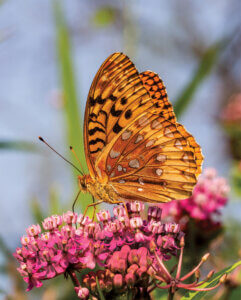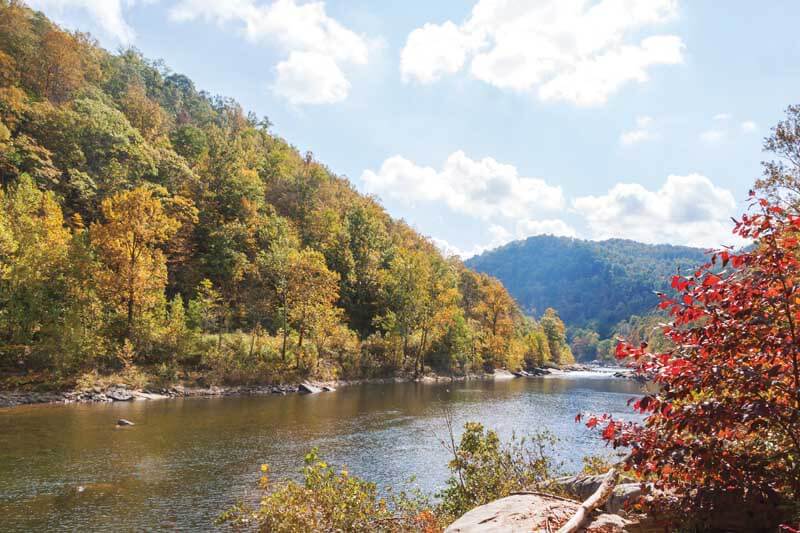
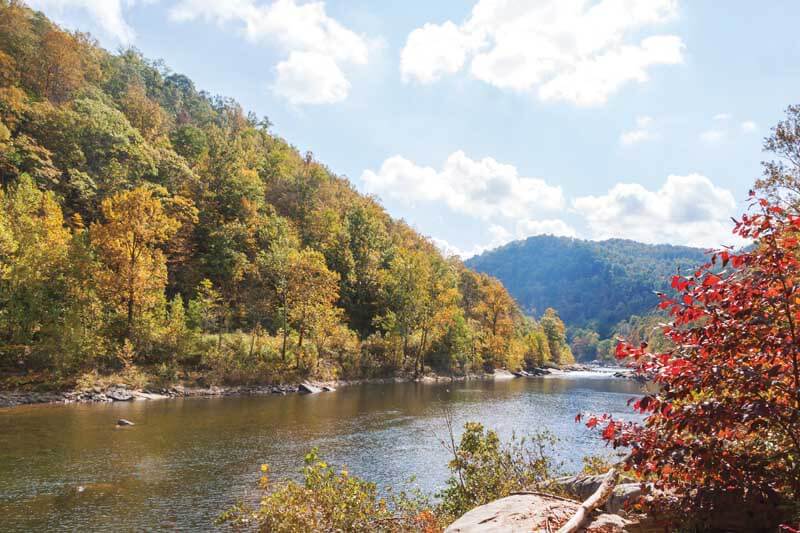
The 2015 State Wildlife Action Plan gives us a first-ever comprehensive roadmap for protecting the state’s at risk species.
It’s hard to imagine how West Virginia’s Cheat Mountain salamander survived the early-1900s clear-cut of the virgin red spruce forest and the wildfires that followed. The scrappy, lung-less, brass-flecked amphibian somehow hung on through mid-century timbering and mining, too. But by the time conservationists proposed it for the federal Endangered Species List in the 1980s, it was isolated to threescore sites, nearly all with fewer than 10 salamanders each. P. nettingi received federal “threatened” status in 1989, triggering the development of a recovery plan.
The Cheat Mountain salamander was lucky to be noticed: There was no systematic way of identifying species at risk at the time, and untold species must have fallen outside the safety net. But at the dawn of this millennium, conservationists persuaded Congress to protect species before they become endangered. The resulting State Wildlife Grants Program has directed more than $800 million nationally to assist state wildlife agencies in creating 10-year State Wildlife Action Plans.
SWAPs revolutionize nongame wildlife management. West Virginia’s first, published in 2005, gathered information from environmental professionals, academics, and conservationists across the state in one place for the first time, creating the beginnings of a comprehensive wildlife and habitat inventory. That motivated a decade of fresh species inventory activities, and the West Virginia Division of Natural Resources (DNR) made that work doubly useful by creating new wildlife atlases. “We’re wrapping up a breeding bird atlas,” says Kieran O’Malley, program manager for DNR’s Wildlife Diversity Program, which coordinates SWAP activities. “We’ve finished a dragonfly and damselfly atlas and just finished the amphibian and reptile atlas. And we’re two or three years into a butterfly atlas.”
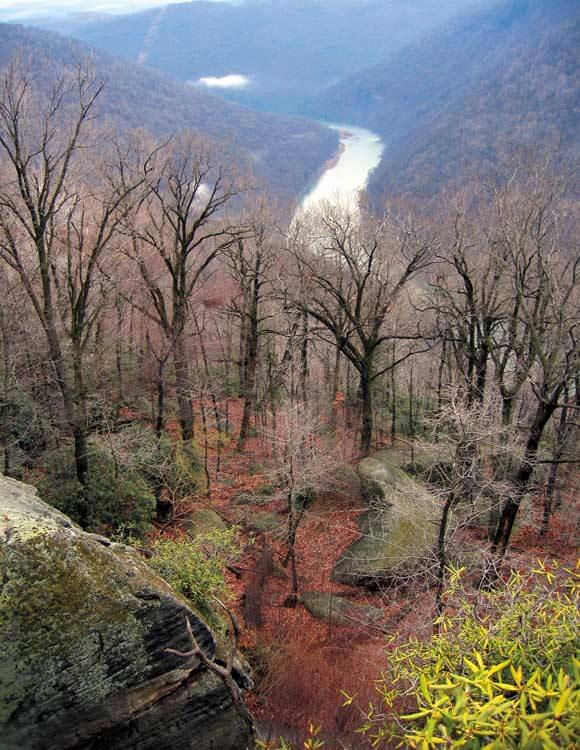
Courtesy of Craig Stihler/WVDNR
So when it came time to create the 2015 SWAP, the state’s cadre of experts took what was already our most comprehensive wildlife database a large step further—and with enthusiasm, says Scott Warner, assistant chief for Wildlife Diversity. “Aquatic biologists worked with terrestrial biologists, invertebrate experts worked with ornithologists, all making their own lists and putting them into the database and looking at habitat needs for all these different species.”
The experts identified more than 1,000 Species of Greatest Conservation Need. They designated 400-some species—300- plus animals and more than 100 plants—as Priority 1. “Those are the ones we feel that, if we don’t do something now, we’re not going to be able to make a difference down the road because we’re going to start losing things,” Warner says.
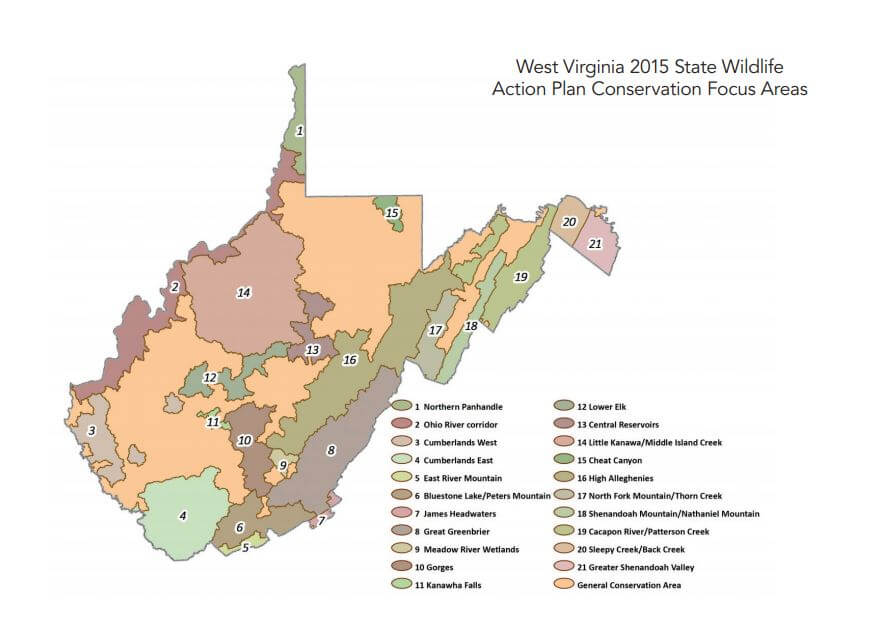
And because species health depends on habitat health, the group outlined 21 geographical Conservation Focus Areas that encompass some two-thirds of the state. The focus areas will target the coming decade’s efforts. “If we’re talking national forest, conservation actions may be along the lines of stream restoration,” Warner says. “In the Eastern Panhandle, it may be conservation of habitat, or in Southern West Virginia it may be more water quality issues.”
DNR submitted its draft 2015 SWAP to the U.S. Fish and Wildlife Service in mid-September. When the plan is approved, we will have our first-ever comprehensive roadmap for protecting the state’s most at-risk species—for making sure nothing misses the safety net. The approach is not a regulatory one, but collaborative, and DNR will soon begin reaching out to potential agency, nonprofit, and private sector partners in each focus area.
The 2015 SWAP promises to shore up the state’s wildlife diversity. “If you’re a birdwatcher, some birds are rare to see—like cerulean warblers, loggerhead shrikes. These birds are declining precipitously,” O’Malley says by way of example. “But through these actions, 20 years from now, you will still have these species in the state.” Some species might enjoy larger ranges than they otherwise would. “Maintaining an intact forest canopy and understory will help animals like the Cheat Mountain salamander respond to changes in the climate,” he says. And some of the state’s 23 federally listed species might come off the Endangered Species List—although he cautions that’s a complex, longterm process.
Five of the 21 focus areas illustrate the range of work ahead.
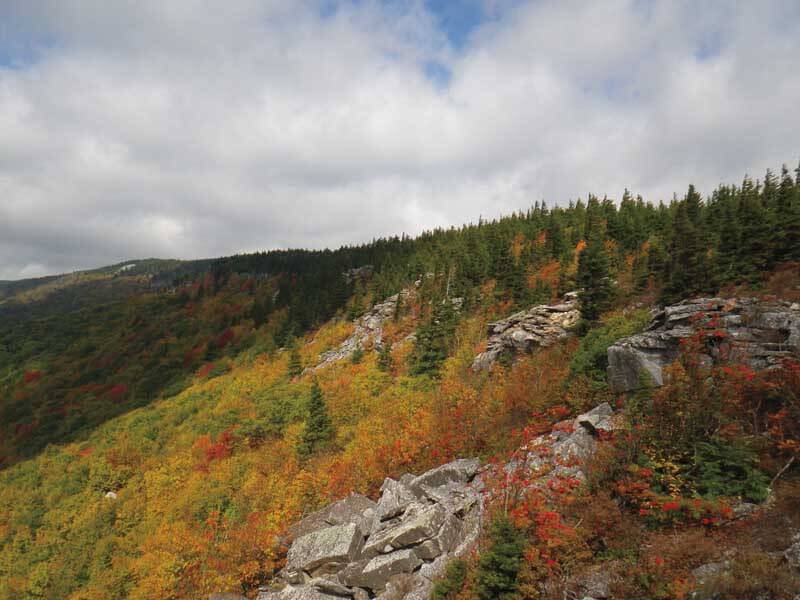
High Alleghenies
West Virginia’s weathered old mountains present vast swaths of habitat at elevations near 5,000 feet. Even many of the wide mountain valleys sit at 2,000 feet and above. The focus area stretching between Canaan Valley and Beckley holds some of the wettest parts of the state and also some of the coldest and snowiest. It lies mainly in the Monongahela National Forest and warrants a lot of superlatives: largest wetland complex in the unglaciated Appalachians. Most extensive spruce forests south of the Adirondacks. Highest river of its size in the East. Largest intact forest block in the mid-Atlantic states.
It’s hard to summarize the range of wildlife that depends on the health of this unique region. Some high-elevation and cave species are found mainly or only here, including the Cheat Mountain salamander, the West Virginia northern flying squirrel, and the Gandy Creek cave springtail. The region supports all or most of the state’s distribution of some Appalachian species, including the southern rock vole and the southern water shrew, and northern species like the snowshoe hare and the northern goshawk. With 61 avian Species of Greatest Conservation Need, this focus area’s importance to birds can’t be overstated, the SWAP enthuses. The diversity and extent of high quality habitats support hundreds of at-risk butterflies and moths, dragonflies and damselflies, snails, mammals, and plants.
Logging and fire changed wetlands and greatly diminished the area and quality of spruce forests here. Tanneries and mining damaged water quality, acid deposition reduced forest productivity, and resort development fragmented habitat. The U.S. Forest Service and many other public and private entities are potential partners.
Cheat River Canyon
A nationally popular whitewater spot east of Morgantown, Cheat River Canyon hit the news in 2014 when a public-private partnership bought timberlands, preserving the canyon nearly rim to rim. The steep, narrow gorge shelters precious species: It holds the entire known range of the threatened flat-spired three-toothed land snail, and it includes a cave where the endangered Indiana bat hibernates and globally rare cave invertebrates live. Forests support the endangered northern long-eared bat and important populations of forest interior nesting birds. Most of the priority species here are birds and snails.
While acid mine drainage at one time severely damaged aquatic habitats, citizen and agency efforts have revived oncedead tributaries and river reaches. “The Cheat River Canyon focus area is a good example of a ‘shovel ready project’ that we may work on early because the players are already in place and a lot of the land is already protected,” Warner says.
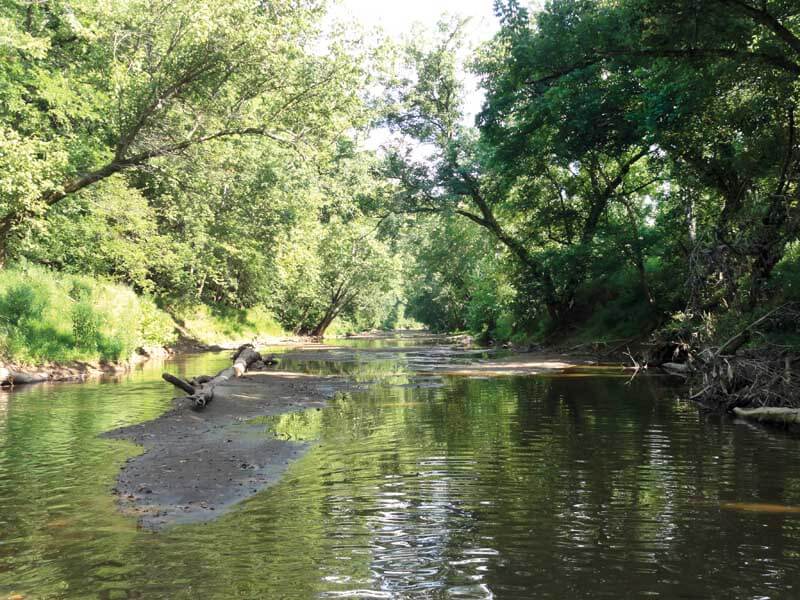
Daniel Cincotta/WVDNR
Gorges
Steep tributaries plunge through oak-forested uplands into the deep gorges of the New and Gauley rivers. The surrounding blocks of forest shelter regionally endemic salamanders and interior nesting birds like the broad-winged hawk and Louisiana waterthrush. Cliffs, talus, and other upland patch habitats support the Allegheny woodrat, many species of bat, and nesting peregrine falcon. Floodplains make up some of the most extensive riverscour prairies and woodlands in the eastern United States, home to many rare plant species.

James Vanderhorst/WVDNR
Development, especially for second homes, fragments the forest. But this focus area holds the New River Gorge National River lands and several state parks and is widely visited and beloved. Because of that it has a range of natural agency and nonprofit partners, O’Malley says.
Cacapon River and Patterson Creek
Oak forests cover the ridgetops in these Potomac Highlands watersheds, while livestock and poultry production dominate the lower slopes and bottoms. “The valley has healthy freshwater mussel populations and aquatic turtle populations and a federally listed aquatic plant in the river,” O’Malley says. “It’s also home to nesting bald eagles, and the ridges on either side of the valley are migration corridors for golden eagles.”
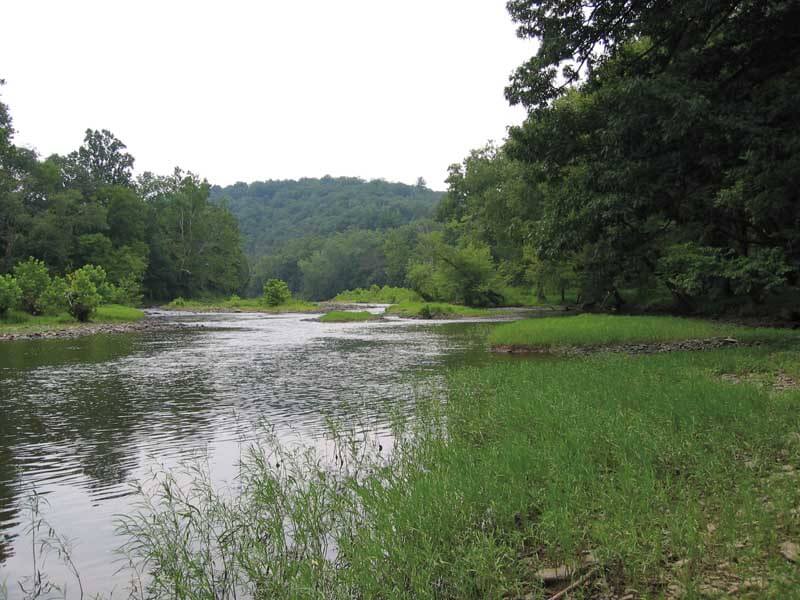
Kieran O’Malley/WVDNR
Logging, agriculture, and second-home development threaten stream quality. But conservation efforts are well established, O’Malley says. “There’s an active farmland protection board, and Cacapon & Lost Rivers Land Trust has conservation easements on 13,000 acres. The land trust has been working for 25 years to develop a forested wildlife corridor connecting the George Washington National Forest at the south to Cacapon State Park at the north.”
Little Kanawha River/Middle Island Creek
The rolling, forested hills of the west-central part of the state support pastureland and hayfields in wide valleys. Warm and cool water streams here hold a good share of the fish and mussel diversity in the state. And the region encompasses some of the most pristine blocks of oak-hickory and maplebeech forest in the Western Allegheny Plateau. Birds and mussels make up most of the priority species in this region.
Oil and gas activity, historically prevalent here, has rebounded in the past decade and can fragment habitats and stress aquatic life through water withdrawals, sediment loads, and brine spills. And low flows from the North Bend Dam on the North Fork of the Hughes River can affect aquatic species downstream. The gas industry is a key potential partner here.
This story was originally published in the November 2015 issue of Wonderful West Virginia.
Written by Pam Kasey





